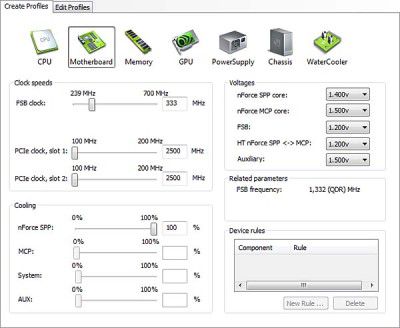From our front-page news:
When NVIDIA launched their ESA platform standard in November, hype around it quickly died down. Things just went quiet. But as it turns out, it mainly had to do with full-hardware support not being quite ready, but things have changed since then. At least weeks CES, it was difficult to talk to a hardware company without hearing mention of ESA, so support is definitely on the way from many companies.
Our friends at Tech Report have received an NVIDIA-built system that includes numerous ESA-certified components and saw what it was all capable of. The ESA software proved to be robust even though it has a beta tag attached to it, and given that we are so early in the ESA life-cycle, it's good to see such great support so far.
The main downside of the entire setup? The amount of cabling required. But, if you are one of those "set it and forget it" people, there should be little maintenance after the initial setup. If ESA catches on, and it has the potential to, you can expect system builders to begin offering complete systems focused around ESA-compliancy, so that a general non-enthusiast user will not have to dabble with the inside of the case.
<table align="center"><tbody><tr><td>

Source: Tech Report </td></tr></tbody></table>
Since ESA is built around the USB spec, each component must be connected to the motherboard via USB. Internal motherboard headers are the most likely candidates for these connections, but it's possible that they'll fill up fast in systems loaded with ESA components. Fortunately, ESA components can be connected via USB hubs. Some chassis manufacturers are expected to include these hubs in their ESA cases to ease the demand for onboard USB headers.
Source: Tech Report
Our friends at Tech Report have received an NVIDIA-built system that includes numerous ESA-certified components and saw what it was all capable of. The ESA software proved to be robust even though it has a beta tag attached to it, and given that we are so early in the ESA life-cycle, it's good to see such great support so far.
The main downside of the entire setup? The amount of cabling required. But, if you are one of those "set it and forget it" people, there should be little maintenance after the initial setup. If ESA catches on, and it has the potential to, you can expect system builders to begin offering complete systems focused around ESA-compliancy, so that a general non-enthusiast user will not have to dabble with the inside of the case.
<table align="center"><tbody><tr><td>

Source: Tech Report </td></tr></tbody></table>
Since ESA is built around the USB spec, each component must be connected to the motherboard via USB. Internal motherboard headers are the most likely candidates for these connections, but it's possible that they'll fill up fast in systems loaded with ESA components. Fortunately, ESA components can be connected via USB hubs. Some chassis manufacturers are expected to include these hubs in their ESA cases to ease the demand for onboard USB headers.
Source: Tech Report
